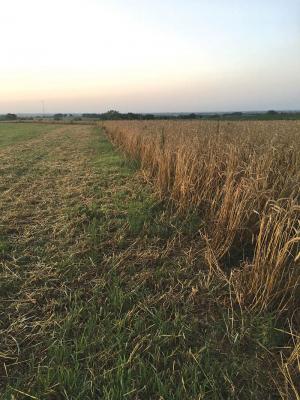2020 - Volume #44, Issue #6, Page #10
[ Sample Stories From This Issue | List of All Stories In This Issue | Print this story
| Read this issue]
He Says Multiple Crops Multiply Profits
 |
“The winter had been hard on the vetch and triticale, and I wanted to thicken up the stand,” explains Brhel, who harvests seed for his own use in cover crops and to sell to others.
Initially, Brhel used a seed cleaner on his homegrown seed. He switched to a spiral separator that used the falling grain’s centrifugal force to separate the seeds.
This summer he invested in an ISM (Impeller Separator Machine) ordered through Friendly Meadows, Millersburg, Ohio (www.graincleanersoh.com; ph 330 473-7647). The Ukrainian-built ISM allows him to clean and separate grains based on weight and shape. It also gives him the potential to do custom seed cleaning for neighbors.
“I had fractions that were almost entirely triticale, others that were almost entirely vetch and others that were a combination,” says Brhel. “The other crops go into still another fraction to be run through again or used in a mixed cover crop.
“Some of my customers want the vetch/triticale combination,” he says. “With the ISM, I can visually tailor the mix to the customer’s needs and then send it off to be tested.
“You have to give up a little, such as when the hairy vetch was ready but the oats were not quite dry,” he says. “There was some shattering of the vetch. As I planned to reseed with vetch anyway, I won’t need as heavy a rate.”
While the yields of the individual species weren’t as high as if they were planted alone, Brhel is confident the end results are superior. As with mixed species cover crops, the impact on soil health is multiplied with poly-cropping.
“My goal is to reduce the use of commercial fertilizer while adding value through the sale of harvested seed in the crop rotation,” says Brhel. “Meanwhile, the poly-crop and rotations are building soil health.”
This year’s poly-crop field was seeded to vetch this summer and will be harvested in 2021 for seed. He will replant it to a cover crop with as many as a dozen species.
“I may graze it in late summer and fall,” he says. “Then I will plant it to corn in 2022. It is really exciting to see what can be done with the combination of crops and livestock. If I don’t need to buy commercial fertilizer, I don’t have to make a 200-bushel corn crop to be profitable.”
Contact: FARM SHOW Followup, Brian Brhel, 1432 W Old Cheney Rd., Denton, Neb. 68339 (ph 402 641-8915; brianbrhel@gmail.com).

Click here to download page story appeared in.

Click here to read entire issue
To read the rest of this story, download this issue below or click here to register with your account number.




